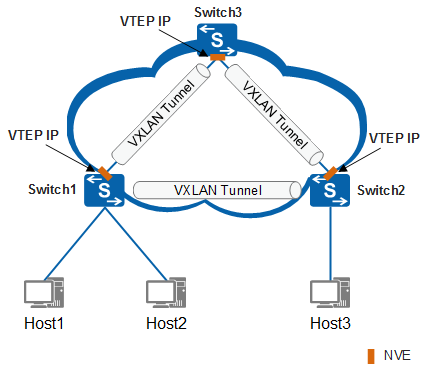Combinations of Underlay and Overlay Networks
Category |
Definition |
Example |
|---|---|---|
IPv4 over IPv4 |
The overlay network and underlay network are both IPv4 networks. |
As shown in Figure 1, the Host IP and VTEP IP addresses are all IPv4 addresses. |
IPv6 over IPv4 |
The overlay network is an IPv6 network, and the underlay network is an IPv4 network. |
As shown in Figure 1, the Host IP addresses are IPv6 addresses, and the VTEP IP addresses are IPv4 addresses. |
IPv4 over IPv6 |
The overlay network is an IPv4 network, and the underlay network is an IPv6 network. |
As shown in Figure 1, the Host IP addresses are IPv4 addresses, and the VTEP IP addresses are IPv6 addresses. |
IPv6 over IPv6 |
The overlay network and underlay network are both IPv6 networks. |
As shown in Figure 1, the Host IP and VTEP IP addresses are all IPv6 addresses. |

Only the S6730-S, S6730S-S, S5732-H, S5731-S, S5731S-S, S5731S-H, S5730-HI, S6730-H, S6730S-H, S5731-H, and S6720-HI support IPv6 network-based VXLAN configuration.

VXLAN implementation principles are similar in the preceding combinations of underlay and overlay networks. To make the description concise and clear, an IPv4 over IPv4 network is taken as an example for subsequent descriptions. For other types of network combination, only the implementation differences are described.
